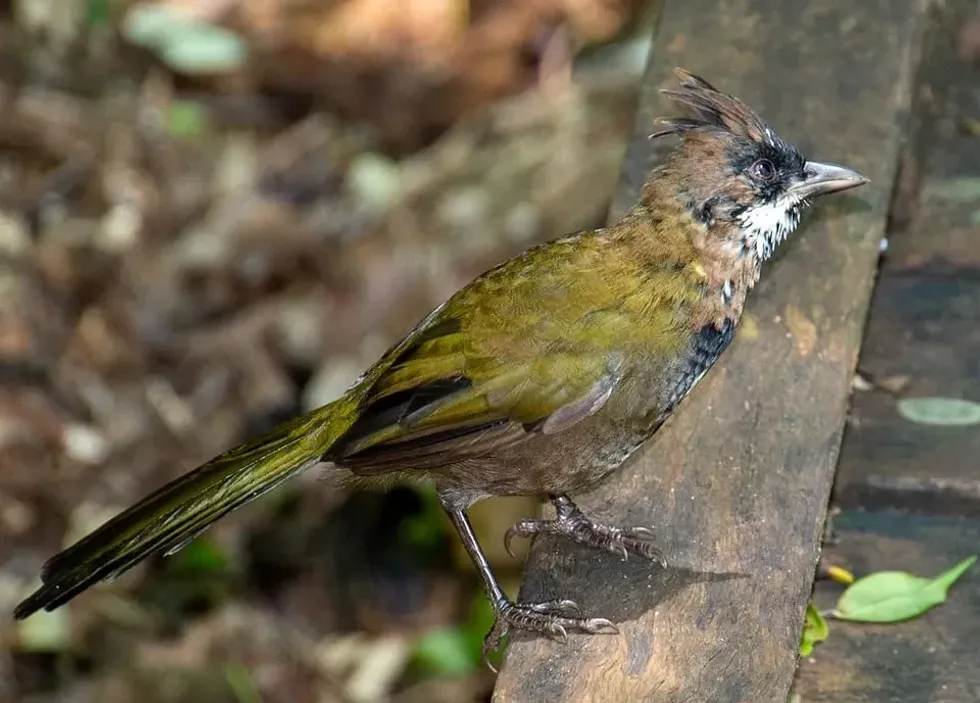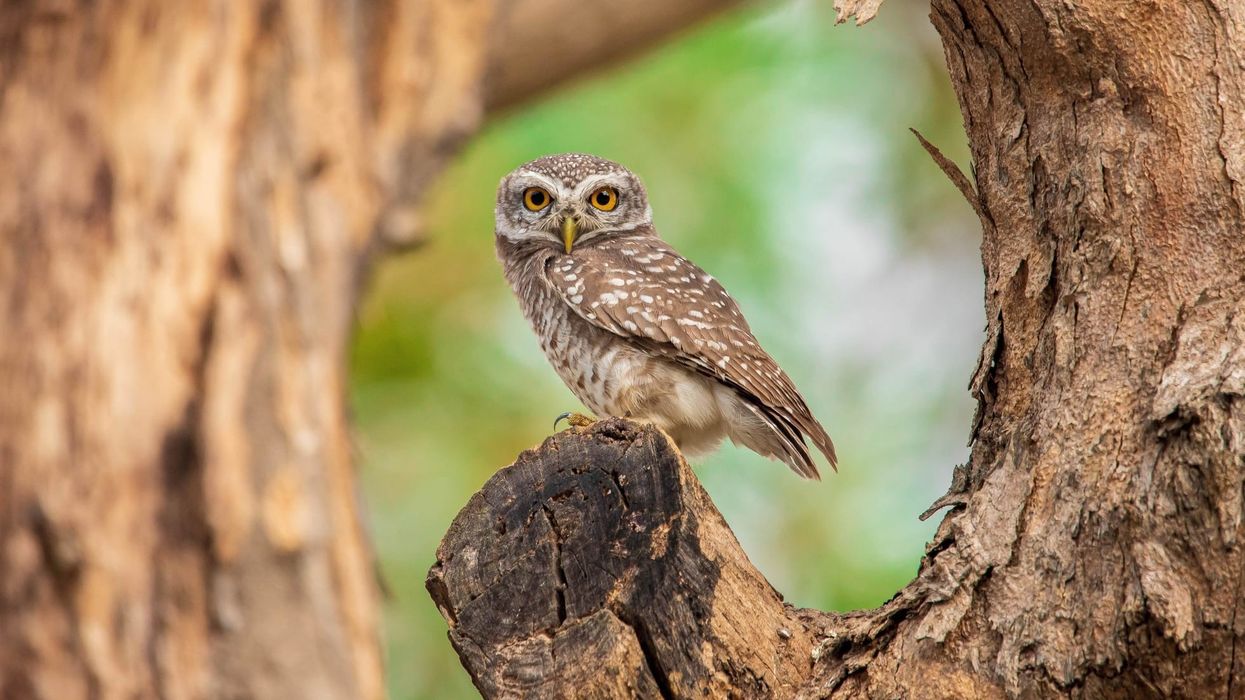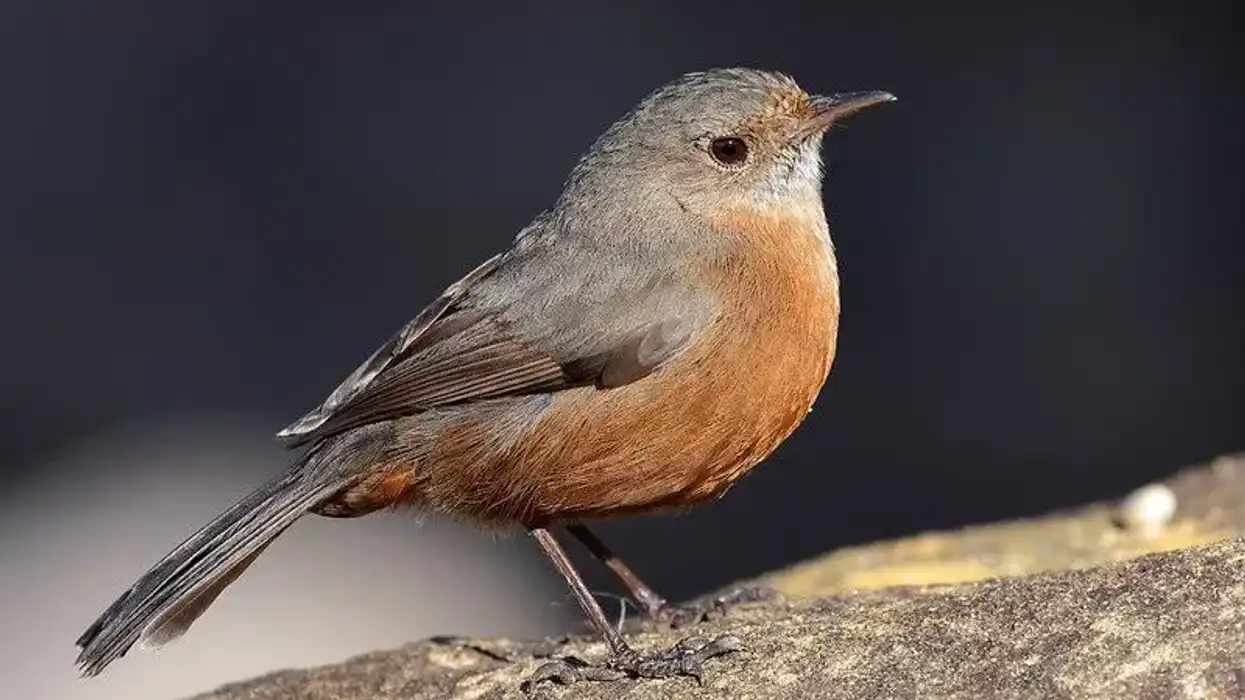If you're interested in Australian wildlife, then you'll have a blast knowing these amazing facts about the eastern whipbird. The eastern whipbird (Psophodes olivaceus) is native to eastern Australia.
This bird is famous within the east Australian wildlife for its songs which is a duet performed by the male and female birds. The males start with a call that sounds like a whip crack. When the females hear the call, they respond.
This bird even got its name for this whip crack sound. These birds are medium in size and have olive-green and dark bodies. They have an adorable little triangular crest on their head and long tail.
The most distinguishing feature is, however, the white patches on both sides of their face. It's hard to confuse them with other birds due to these features.
Read on to know more about the eastern whipbird. For more relatable content, check out these German nun pigeon facts and pigeon tremex facts for kids.
Eastern Whipbird Interesting Facts
What type of animal is an eastern whipbird?
An eastern whipbird (Psophodes olivaceus) is a kind of bird.
What class of animal does an eastern whipbird belong to?
The eastern whipbird belongs to the class Aves of animals.
How many eastern whipbirds are there in the world?
The population of eastern whipbirds in an exact number is not known. They have been reported to be quite common within their habitat range. However, that population number is showing a decreasing trend.
Where does an eastern whipbird live?
There are two known subspecies under this species of bird. Their eastern whipbird distribution depends on those subspecies. All these birds live in eastern Australia. The subspecies, Psophodes olivaceus olivaceus, lives in central-eastern Queensland southwards to southeast Victoria, while Psophodes olivaceus lateralis is mainly found in northeast Queensland.
What is an eastern whipbird's habitat?
The primary habitat of the eastern whipbird is various kinds of forests, mainly full of dense undergrowth. They can be found in rainforests, exotic pine forests, and wet eucalyptus forests. They can also be seen around riverine vegetation and other types of dense and low vegetation.
Who do eastern whipbirds live with?
These birds live in pairs. They can be seen foraging alone or in loose, small groups of up to four birds. Very few times, they have been seen with groups of mixed-species birds, but they join the Australian logrunner at times during foraging.
How long does an eastern whipbird live?
The average lifespan of an eastern whipbird is not known. However, they have been seen to live for up to a maximum of 12 years and three months of age.
How do they reproduce?
The breeding season of these birds occurs around July to November. They are known to be monogamous in nature. Courtship behavior involves the male feeding the female bird. After copulation, the female lays a total of two broods and one to three eggs per clutch on average.
The female incubates the eggs for the next 16-18 days, while the male feeds the female. Both parents feed the chicks, while the female only broods them. The chicks leave the nest at about 10-13 days after the eggs hatch.
What is their conservation status?
The conservation status of the eastern whipbird according to the International Union for Conservation of Nature Red List is listed as Least Concern. This bird is facing a slightly decreasing trend due to climate change and habitat shifting. However, the effect is on a small scale, so no conservation actions have been taken yet.
Eastern Whipbird Fun Facts
What do eastern whipbirds look like?
The eastern whipbird (Psophodes olivaceus) is a medium-sized bird species, like a stilt sandpiper. These birds have a clearly visible long tail, an erectile triangular crest, and a broad white patch on both sides of their faces.
This patch is usually small to absent in juveniles, but it grows with age. The upper parts of the body of these birds, including their tail, are dark olive-green in color.
They have a grayish-white belly, and their breast, head along with their crest is black in color. Both the male and female birds look similar.
How cute are they?
These birds can be pretty cute. However, they are territorial and will become aggressive if you go near their nests. It is best not to be fooled by their cuteness.
How do they communicate?
Their call or song is pretty unique among Australian birds. The call is performed as a duet. The male bird starts the call with a loud whip-crack sound.
The female hears this whip-crack call and responds with a sharp 'chew-chew'. Sometimes the male has been heard adding finishing notes to the duet call. The contact call of these birds is a series of five to nine grating, harsh notes, while their call consists of a series of even harsher notes.
How big is an eastern whipbird?
An adult eastern whipbird size is about 9.8-11.8 in (25-30 cm) in length. They are slightly smaller than green herons, which are about 16.1-18.1 in (41-46 cm) in length.
How fast can an eastern whipbird fly?
The exact speed at which these birds fly is not known. However, they have been seen to make short flights of 3.3-16.4 ft (1-5 m) or move by hopping when foraging.
How much does an eastern whipbird weigh?
An adult female eastern whipbird weighs about 1.7-2.3 oz (48-64 g), and an adult male weighs about 2.1-2.6 oz (60-75 g). They are slightly heavier than green parakeets, which weigh about 1.6-2.1 oz (45-60 g).
What are the male and female names of the species?
The males of this species are called cocks, and the females are called hens.
What would you call a baby eastern whipbird?
A baby eastern whipbird is called a chick or a hatchling.
What do they eat?
These birds are omnivorous in nature. Among plant matters, they feed on fruits, shoots, and seeds of many plants. Their animal-based diet consists of small invertebrates, like millipedes and orb-weaver spiders and other species of spiders, insects, and often small frogs or lizards.
Are they dangerous?
Eastern whipbirds are not dangerous or aggressive towards humans. However, they are known to be territorial, so they do act aggressively if someone approaches their nests.
Would they make a good pet?
There are no records of these birds living as pets. They also require a certain environment to survive and thrive. That's why it would only harm them if they are taken from their natural habitat.
Did you know...
The nests of these birds are in the shape of a cup, primarily made with rootlets, stems, twigs, grass, and sticks. They are lined with dry grass, rootlets, and roots. The nests are built about 3.3 ft (1 m) above ground level on dense low plants or vegetations.
How many types of whipbirds are there?
There are four different species of whipbirds. These are the eastern whipbird (Psophodes olivaceus), the black-throated whipbird (Psophodes nigrogularis), the white-bellied whipbird (Psophodes leucogaster), and the Papuan whipbird (Androphobus viridis).
They all live within Australia. The eastern whipbird range falls within eastern Australia, the black-throated whipbird is found in southwest Australia, the white-bellied whipbird lives in south-central Australia, and the Papuan whipbird is native to New Guinea.
What does a whipbird look like?
All four species of whipbirds differ in appearance. However, they all are medium-sized bird species. Some have the crest, and some do not, while all four bird species have a long tail and a broad white patch on both sides of their faces.
Here at Kidadl, we have carefully created lots of interesting family-friendly animal facts for everyone to discover! Learn more about some other birds from our carrier pigeon surprising facts and old German owl pigeon fun facts pages.
You can even occupy yourself at home by coloring in one of our free printable speckled mousebird coloring pages.









